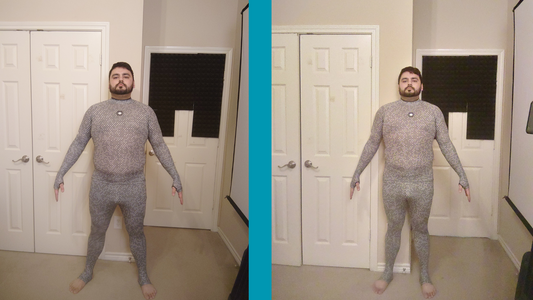

How To Reduce Waist Size and Why It Can Benefit Your Health
Your waist size plays an important role in your overall health and well-being. Excess fat in your abdominal area and waist can increase your risk of a variety of health concerns. Understanding how to reduce waist size and why it matters can help you protect your long-term health and reduce your risk of complications.
ZOZOFIT looks at some tips for shedding belly fat and address a few of the key reasons why you should strive to reduce your waist size.
How To Reduce Waist Size With Comprehensive Efforts
Belly fat is among the most difficult to shed. As a result, reducing your waist requires a multi-tier approach for safe, effective weight loss.
Balance Your Diet
Start with a balanced, healthy diet targeted at reducing your waistline. Create a meal plan that results in a consistent, reasonable calorie deficit. Remember that a calorie deficit is necessary for your body to effectively target fat stores.
Your meal plan should focus on nutrient-dense selection. Maximize the calories you take in so that you get the greatest possible concentration of vitamins, whole grains, and lean protein. That means a balanced plan with fruits and vegetables, varied protein selections and hearty whole-grain options for dietary fiber.
Be mindful of your eating habits throughout the day. Avoid needless snacking that adds calories quickly. Allow plenty of time for your meals so you can eat slowly and listen to your body’s hunger cues. Resist emotional eating as well. Find techniques to manage your emotional responses without comforting them with food.
Incorporate Physical Activity
Routine physical activity helps your body burn calories, boost your metabolism, and shed those excess fat stores. Create an exercise plan that incorporates various activities. Aerobic exercise, including brisk walks, swimming, and cycling, help your body burn calories by boosting your heart rate. As you burn calories in a calorie deficit, your body also targets your belly fat.
Strength training a few times a week helps you build more lean muscle mass. Your muscle mass contributes to improving your metabolism so that your body can burn those fat cells more effectively. Finally, include core-strengthening with something such as yoga, planks or crunches to help strengthen and tone your core. Targeting that area specifically as part of your comprehensive workout plan helps your body burn those fat stores.
What To Consider When Adjusting Your Lifestyle for Success
Losing belly fat and keeping it off requires a commitment to long-term changes. That includes making an effort to get sufficient sleep every night because sleep deprivation can actually contribute to weight gain. Consider ways to manage your stress levels as well. Chronic stress triggers prolonged high cortisol levels in your body, which can actually encourage your body to store abdominal fat. Work on stress-reduction techniques such as meditation, deep-breathing exercises and yoga.
Why Waist Size Is Important
If you are unclear about why your waist size matters, you should understand the health risks associated with carrying excess weight in the abdominal area. Increased fat in your waist increases the risk of type 2 diabetes, stroke, and heart disease. Visceral fat cells in your abdomen can lead to increased cholesterol levels, insulin resistance and high blood pressure as well. The more weight you carry in your waist, the greater the risk of complications.
How Belly Fat Becomes a Problem
Some people are more susceptible to accumulating belly fat because of a genetic predisposition, hormonal fluctuations and lifestyle. The most common belly fat problems come from visceral fat, which rests deep below the tissue surface, as compared to subcutaneous fat, which is just under the skin. Subcutaneous fat is often easier to shed, while visceral fat tends to require more concerted efforts.
Because genetics contribute to belly fat storage, remember that your efforts should be reasonable for you. Set goals for a healthy waist size that reduces your medical complication risks instead of trying to strive for an ideal. Attainable goals help with motivation as well. Remember that every fitness journey is unique and requires an individual approach. With commitment and understanding, you can get the results you want.
How To Reduce Waist Size and Track Your Progress
When you commit to reducing your waist size, you may want to monitor your progress so you can adjust your plan as needed. This should start with measuring your waist and then establishing a tracking plan.
Few people know how to measure waist size correctly. When you start your efforts, correct measurements are important for accurate tracking. While you can take your waist size measurements with a tape measure, it is difficult to measure the exact same spot every time, and reading it precisely can be a challenge. That means your waist size measurements can fluctuate, which may cause frustration.
ZOZOFIT has a solution with a 3D body scanning system. With ZOZOFIT, your smartphone takes the readings and measurements so you have accurate, consistent readings every time.
Focus on your measurements, not your weight. Tracking numbers on the scale can lead to frustration, especially when you start building muscle. Even if you feel as though the scale is stagnant, look for signs of progress in your measurements instead. This allows you to maintain your focus on your fitness efforts without discouragement.
Determine how frequently you want to assess your progress and only check your measurements at those intervals. Allow enough time between measurements for you to see signs of progress. For example, measure every two weeks instead of daily. Routine monitoring of your progress can help motivate you as you see your measurements change.
How To Reduce Waist Size and Sustain Your Efforts
Understanding how to reduce waist size and recognizing the importance of doing so are important steps toward protecting your long-term health. When you understand the health concerns that come with belly fat, you can appreciate the importance of losing those fat stores. The right fitness plan, dietary approach and monitoring make a difference in your success.
Check out ZOZOFIT today to help simplify your body composition tracking and put your personal measurements right in the palm of your hand.

![zf-w-[168px] zf-h-[40px]](http://zozofit.com/cdn/shop/t/15/assets/logo-desktop.png?v=117713855448369080381753069598)




